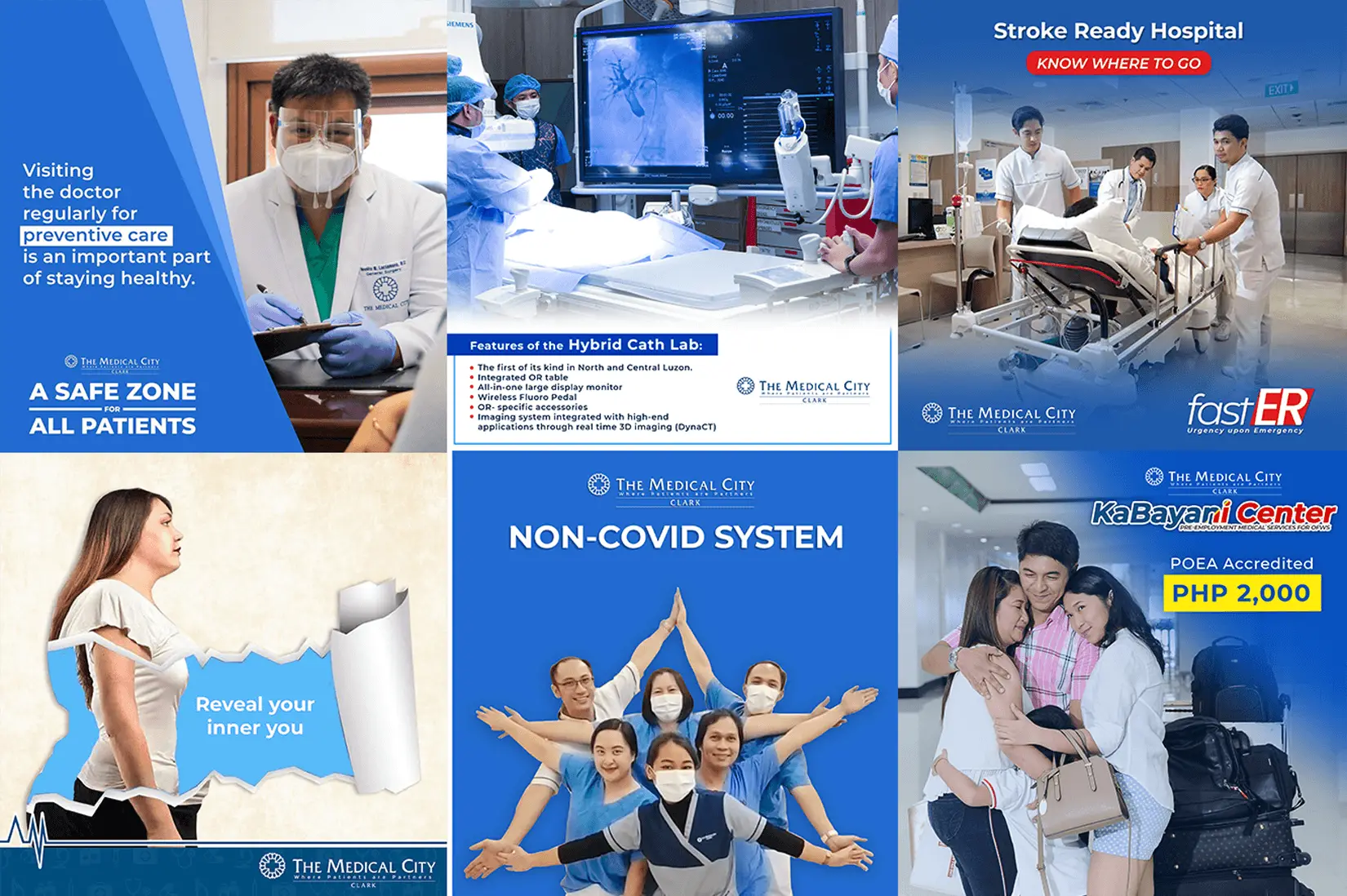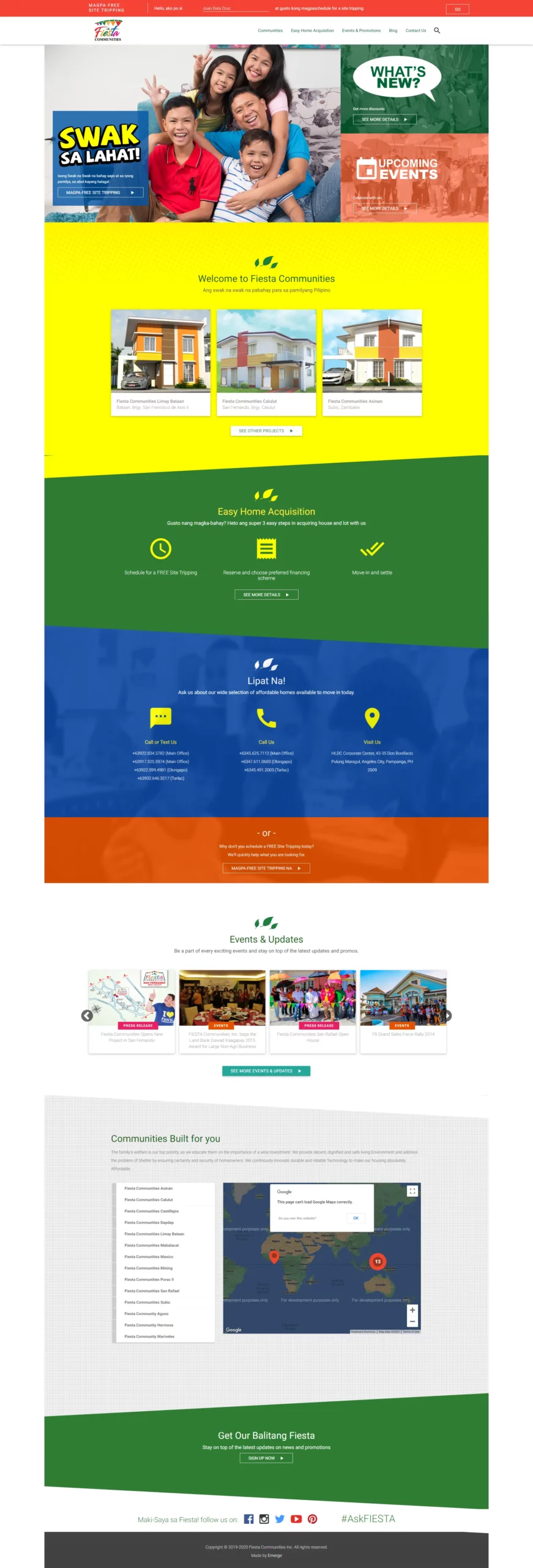Update your Digital Marketing Strategies for Healthcare with these 5 Simple Tips
“TikTok is trending, let’s go to TikTok!” or “Keep boosting and boosting until we reach more audience!”- these are some familiar phrases during meetings you’ve probably heard if you work for digital marketing, even in healthcare.
As more and more entities in the healthcare industry embrace a digital-first initiative on their services and marketing; most fall into traps of improper implementation of its strategies.
The competition and post-pandemic uncertainties often blind hospital/clinic management and their corresponding marketing teams in seeing which works when addressing patients’ needs, promoting services, and managing appointments.
Though riding on new trends and revolutionizing online presence are recommendable and efficient, some are misdiagnosed (no pun intended) and aren’t as reliable. There are simple marketing moves that are still proven effective despite being obsolete, while newer ones need a touch of psychographics and demographics as an intervention.
Here are some digital marketing strategies for healthcare businesses you should reconsider and update your existing marketing plans.
1. Ask questions the way a healthcare expert would.
Social media copy (caption and graphic text) is usually tailored to simple paragraphs. You might be familiar with the AIDA structure, wherein the first sentence is expected to be striking and attention-grabbing.
Most copywriters and marketing managers allude to witty lines (e.g. If they are promoting checkups for cardiovascular diseases they would play on phrases like “your heart deserves better.”)
But many plausible patients might not find this striking to a degree of urgency for their health. Understanding how they think in these circumstances helps us frame the right words, like the fact they trust and listen to their doctor or nurse.
Here we analyze how an attending healthcare expert would talk to a patient. Imagine yourself going to the clinic for a check-up; you’d notice that the first thing a doctor says is a question- “What are you feeling?”, “Where does it hurt?”, “Do you feel pain in this area?”, “Having trouble breathing?”, etc.
Immediately a patient addresses this inquiry, especially if the symptom or the question relates to their current experience, prompting them to read more and engage more on the social media material.


The sample above- social media posts on the left feels more personal, done with an inquiring voice, it creates a sense of attention- the question, in the beginning, would sound more likely to what a doctor would ask. The post on the right aims at novelty attraction, most social media users will find it witty, at most humorous, but it doesn’t persuade users to continue reading.
2. Use local or simpler terms.
Never assume that an amount of explaining would make patients understand what you are talking about regarding their health, treatments, and services you offer.
Even the most layman of terms out there may not bring much interest. Banking on tip no. 1, put yourself on the patient’s vocabulary.
If your hospital, clinic, or office is an area that has a specific vernacular, technical and even plain English might not translate well for them- your question may sound declarative or vice versa. It’s innovative and apt to know and use what certain health-related words and phrases are in their language or slang.


In the example- the left social media post used a vernacular word and sentence to ask, “were your feet swollen when you woke up this morning?” (Note we are applying both tip no. 1-2 here.) The right social media post proceeds to use it like normal hospitals would inform users. Notice how relatable the left one sounds?
Moreover, you may use this step to optimize local SEO. Local SEO is vital for hospitals to reach potential patients in their local area. Hospitals are expected to focus on optimizing their website, often used for booking appointments for specific local search queries. By enhancing their local SEO, healthcare brands and businesses can grow their online visibility and reach a wider audience.
3. Optimize Reels as social proof!
To see is to believe, well, in this case, to be trustworthy. Patients are more inclined to get their health checked when they see who will be seeing them. It’s more than a touch of humanity- rather transcends the online presence to something tangible, and care is increasingly experienced when they see a face in front of it.

Static graphics may creatively show images of healthcare experts, yet these are stagnant and unresponsive. But putting them in a video or reel, showing they move and talk adds enthusiasm, credibility, and persuades users easily to know more and learn more of what doctors or nurses have to say.
Prioritize video/reel content for patients as it allows hospitals to showcase their services and expertise dynamically and interactively. These can be:
- Educational reels – provide valuable information on topics such as health and wellness, news, fact-checking Promotional videos can highlight your services’ unique features and benefits and help attract new patients.
- Patient review reels – help build trust and credibility by showcasing real-life experiences with your healthcare services or hospital treatment
- Promotional reels – highlight treatments’ unique features, how it helps patients, and help attract new ones.
Optimize video/reel content for each platform and ensure it’s easily accessible and viewable on mobile devices. These forms of reels are part of what digital strategists call a “social proof”, note how meticulous social media users/consumers rely more on online reviews, ratings, and recommendations from friends and family when purchasing. And the healthcare industry is no exception.
Social proof can come in many forms, including online reviews, testimonials, and social media followers.
4. Invite local influencers for a check-up.
Influencer marketing has been a popular trend in digital marketing for some time now and they are growing to a point that localities have their own local groups. They can be utilized to inform patients about a new service or explain an illness and how the hospital can help treat it.
They are relatable, speak the people’s language, and with their own brand of creativity increases interest about health and health care service.
By actively engaging with your followers and sharing valuable content, you can demonstrate to current and potential patients that the hospital is a source of credible information and is able to address healthcare issues.
5. Improve patient personal care with chatbot updates
If your primary bridge with current patients and potential new ones is through chatbot, website, or social media; you can improve your trust rate and maintain patient loyalty by adding post-service efforts with your chatbots.
For example when a patient recovers and has been discharged from the hospital. A week after, a social media chatbot may send the patient a message checking her post-op recovery or wishing her a fast one. This can be applied to first-time inquirers as well. It can be manual, or AI-generated, seeing an increase in machine learning utilization.
A simple chat may convert to a healthy conversation and convert this engagement to a habitual check-up routine, fostering a patient to be more dynamic and active in his/her health.
Note, however, that this should be done with prudence and to avoid bombarding patients constantly with promotions and other messages.

Update the health of your digital marketing strategies today!
We know the rapid growth and constant changing of social media trends and digital marketing strategies seem like a race. But always go to the core of healthcare promotion and development- the patients. Patients want access to high-quality yet affordable healthcare resources and are both meticulous and becoming more involved with the options the healthcare industry provides.
The patient’s perspective of healthcare is that of a consumer shopping for furniture or availing of internet service. As a result, hospitals, clinics, and other healthcare institutions must share with their target audience as they would with traditional consumers while using the most innovative digital marketing tools.
Remember that the goal is to build trust with the services provided and how to add value to patients’ lives, making patients understand why they should choose the healthcare you give more than others.
Our tips may sound simple but trust us when we say we even the most uncomplicated strategy often works best in the ever-growing complicated world of digital healthcare and marketing.
If you’re looking for the right strategies and effective social media outputs, we can greatly help! Click here to book a free consultation with our expert!




















































































